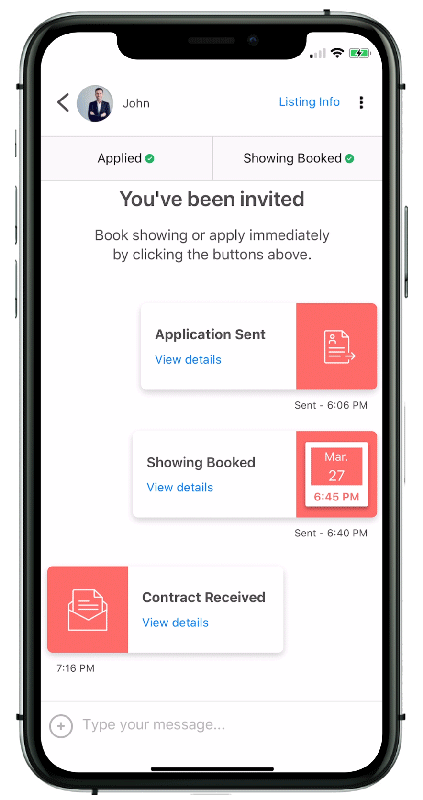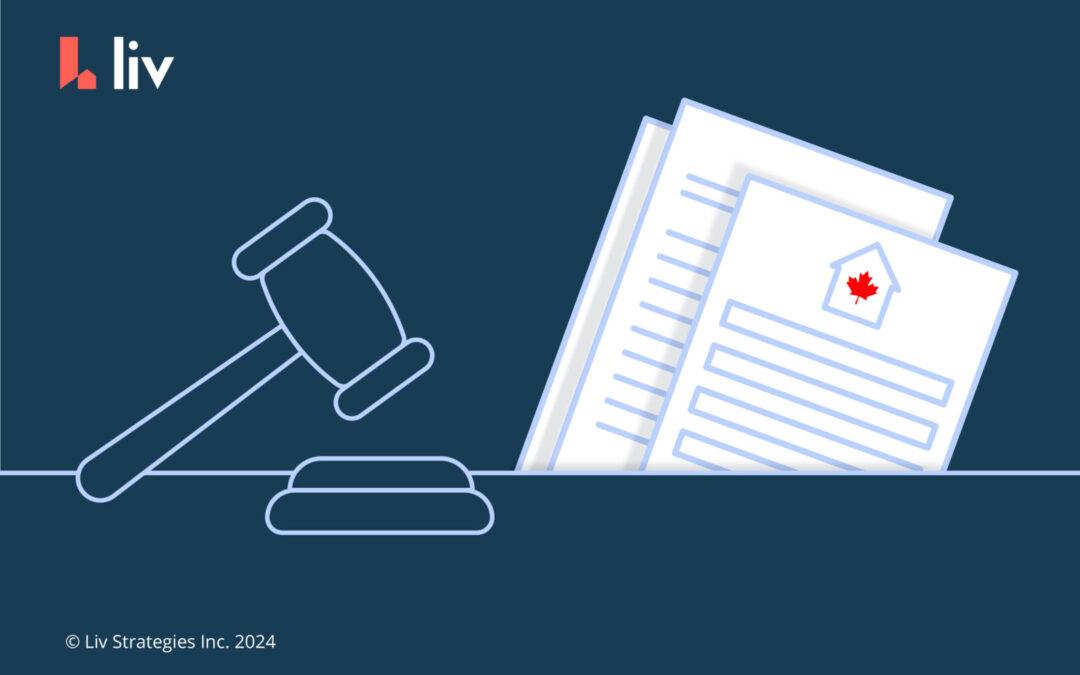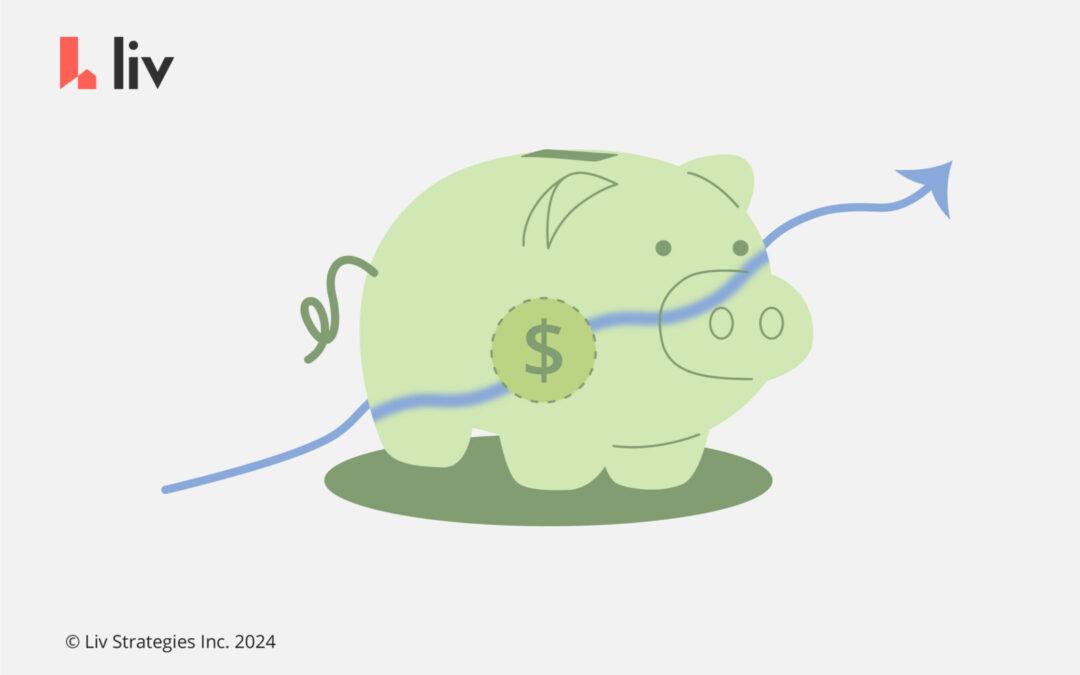Subletting is a great option for renters seeking a little flexibility in their rental arrangement, but who don’t want to give up the stability of having a place to rent. For landlords, it’s an excellent way to keep qualified tenants while eliminating the time-consuming process of filling vacancies yourself. In order to make a sublet arrangement work though, both parties need to be aware of their rights & responsibilities, and have a clear idea of how the process works. Here, liv.rent will provide an overview of subletting in Canada – broken down for renters & landlords in B.C., Alberta, and Ontario.
Join Our Newsletter
For more info on rental laws and policies (e.g. eviction, lease agreements, repairs & maintenance), subscribe to get the latest news.
What is a sublet?
Subletting is the process of renting out all or part of a property that you are currently leasing from a landlord to another person, referred to as the subtenant or subletter. In a subletting arrangement, the original tenant becomes the “sublessor” or “sublandlord,” while the person who subleases the property becomes the “sublessee” or “subtenant.”
The key aspect of subletting is that the original tenant retains the primary lease agreement with the landlord, and they essentially become a middleman between the landlord and the subtenant. The subtenant pays rent to the original tenant, who in turn continues to pay rent to the landlord as per the terms of the original lease.
Subletting is often used to temporarily lease a property when the original tenant needs to be away for a period, such as for travel, work, or study abroad. It can also provide flexibility for renters who may need to move out before their lease term ends. However, it’s important to note that subletting typically requires the landlord’s consent and adherence to local laws and regulations.
Is subletting legal in Canada?
Yes, subletting is legal in Canada, but it is subject to specific rules and regulations that vary by province and territory. While subletting is generally permitted, tenants must obtain proper consent from their landlords before subletting their rental units. Landlords have the right to approve or reject a subletting arrangement based on valid reasons.
It’s important for both tenants who wish to sublet and potential subtenants to be aware of their rights and responsibilities under local rental laws. These laws can differ across provinces and territories, so it’s recommended to consult the residential tenancy agency or authority in your specific region to understand the exact requirements and regulations related to subletting.
Subletting in different provinces
Rental laws can vary greatly by province/territory in Canada. Each region comes with its own set of rules, regulations, and best practices when it comes to subletting. Whether you’re a tenant considering subletting your space, a landlord looking into subletting, or a prospective subtenant looking for a short-term arrangement, understanding the specific guidelines in your province is essential to ensure a smooth and straightforward subletting experience.
Is subletting legal in BC?
In B.C., tenants have the right to sublet their rental units with the landlord’s consent. However, the landlord cannot unreasonably withhold consent. If a tenant wishes to sublet, they are required to provide the landlord with a written request that includes specific information about the proposed subletting arrangement, such as the subtenant’s name and contact information, the term of the sublet, and reasons for subletting.
The landlord has 14 days to respond to the tenant’s subletting request. If the landlord does not respond within this timeframe, the tenant can assume that consent has been given. If the landlord refuses to give consent, they must provide valid reasons for the refusal.
It’s important for both tenants and subtenants in B.C. to follow these procedures and ensure proper documentation to maintain transparency and comply with the law.
Keep in mind that rental laws and regulations can change over time, so it’s a good idea to consult the Residential Tenancy Branch of British Columbia or a legal professional for the most up-to-date information regarding subletting in the province.
Is it legal to sublet in Ontario?
Yes, subletting is generally legal in Ontario. However, there are specific rules and regulations that both tenants and landlords must follow.
In Ontario, a tenant has the right to sublet their rental unit, but they must obtain written consent from their landlord before doing so. Landlords cannot unreasonably withhold consent for subletting. When requesting to sublet, tenants must provide their landlord with a formal written notice that includes the following details:
- The subtenant’s name and contact information
- The term of the sublet (start and end dates)
- A copy of the proposed sublet agreement
- The reason for subletting
The landlord has the right to request additional information about the proposed subtenant, but they must respond to the tenant’s request within a specific timeframe (usually 7 to 30 days, depending on the situation).
If the landlord refuses consent, they must provide valid reasons for the refusal. If the landlord does not respond within the specified timeframe, the tenant can assume that consent has been given.
It’s important for both tenants and potential subtenants to follow these procedures and adhere to the law in order to engage in a legal subletting arrangement in Ontario.
As rental laws and regulations may change, it’s recommended to consult the Landlord and Tenant Board of Ontario or seek legal advice for the most current and accurate information on subletting in the province.
Is subletting legal in Alberta?
Subletting is generally legal in Alberta, but tenants must obtain written consent from their landlord before proceeding. Landlords have the right to approve or reject a subletting arrangement based on valid reasons, and they cannot unreasonably withhold consent.
Once consent is granted, both the original tenant and the subtenant should establish a sublet agreement that outlines the terms and responsibilities. While the subtenant pays rent to the original tenant, the latter remains responsible for fulfilling obligations under the original lease agreement, including paying rent to the landlord. Adhering to legal requirements and open communication between all parties is essential for a successful subletting experience in Alberta.
How to sublet your unit: for renters
Here’s a quick breakdown of what the subletting process will look like for renters, as well as some recommended extra steps to ensure you’re doing your due diligence and protecting yourself legally.
- Review the lease agreement: Before you start trying to sublet your unit, read through your tenancy agreement and make sure you pay attention to any lease terms regarding subletting to make sure it’s permitted under the contract.
- Get the landlord’s approval: Once you’ve ensured that subletting is permissible within the terms of your lease, you should make sure to obtain written consent from your landlord to avoid disputes later on.
- Find a subletter: Once your subletting request has been approved by your landlord, start advertising your space, interview potential subletters, and select the right fit. You can post your room for rent on liv.rent to find a subletter safely, quickly, and easily.
- Negotiate the rental terms: Set a rent price for your sublease, decide on a sublet period, and clarify the terms and rules of the rental arrangement with your subletter.
- Document everything: Be sure to keep a written record of all communications throughout the process. Draft a sublet agreement that lays out all the terms and conditions of the subletting arrangement.
- Help facilitate the transition: Introduce your subletter to the property and landlord, and be sure to walk them through their ongoing responsibilities.
- Maintain communication: Keep an open line of communication for any issues or questions, as well as connect them to the landlord.
How to sublet your unit: for landlords
Landlords won’t have as much to do during the subletting process, as the onus is typically primarily on the original tenants to find subtenants. Still, there are a few recommended steps for landlords to take before putting pen to paper on a subletting agreement in order to ensure that they and their rental property are protected.
- Add a subletting clause: Before renting out your unit in the first place, it’s a great idea to add a Subletting Addendum to the lease agreement. It’s not uncommon for tenants to sublet their units, so making clear the exact requirements and expectations from the outset is essential for protecting yourself.
- Screen subletters: Be sure to evaluate potential subletters through interviews, reference checks, and credit & background checks. You can make this process easier and more effective by taking advantage of tools such as the Trust Score.
- Draft a sublet agreement: Either have the original tenant create a sublet agreement, or create one yourself and ensure it is signed by all parties involved.
- Work out the finances: Determine the amount of rent, deposits, and payment methods that the subtenant will use.
- Maintain communication: Stay in touch with both the original tenant and the subletter to address and get ahead of any potential issues.
>> Recommended Reading: Understanding Lease Addendums Part 1: What Is A Lease Addendum?
FAQ: Subletting in Canada
What is subletting and how does it work?
Subletting is a rental arrangement in which a tenant (the original tenant) leases all or part of their rented property to another person (the subtenant or sublessee). In a subletting scenario, the original tenant essentially becomes a middleman between the landlord and the subtenant.
What are the rules for subletting in BC?
In British Columbia, subletting is permitted, but tenants must first obtain written consent from their landlord. The landlord has 14 days to respond to the request, and if consent is given, the original tenant remains responsible for rent and property upkeep. Both parties should enter a subletting agreement outlining terms, and the original tenant must ensure the property is returned in its original condition at the end of the sublet period.
For complete rules and regulations regarding subletting in B.C., it’s best to consult this official resource.
How long can a tenant sublet in Ontario?
In Ontario, there is no specific time limit defined by law for how long tenants can sublet their rental units. The duration of a subletting arrangement is typically determined by mutual agreement between the original tenant (sublessor) and the subtenant (person subletting the unit). The sublet period can range from a few months to the remaining duration of the original lease, depending on the needs and agreements of the parties involved.
Can a landlord prevent you from subletting in Ontario?
In Ontario, landlords cannot unreasonably withhold consent for subletting. This means that while a landlord has the right to approve or reject a subletting request, they must have valid and reasonable grounds for refusing consent. The Residential Tenancies Act (RTA) outlines the rules related to subletting in Ontario.
Can you make profit from subletting?
Yes, renters can potentially profit from subletting, but it’s important to approach the process carefully and ethically, considering both legal and practical aspects. As the original tenant, you have the flexibility to set the rent for the subtenant. You can choose to charge the same rent you pay to the landlord or adjust it based on factors like market rates, utilities, furnishings, and other amenities. Any amount you charge beyond your own rental costs could potentially lead to a profit.
Can I charge more for a sublet?
Yes, renters are within their rights to charge subtenants more than the original cost of rent. If you’re subletting your rental unit with furniture, or if it’s a particularly busy time of year or average rent prices have increased substantially since you signed the original lease, it’s quite likely that you’ll be able to charge more than you’d normally be paying.
Is subletting a risk?
For both landlords and renters, subletting isn’t without risks – however, these risks can be almost entirely eliminated by understanding local rental laws, and doing your due diligence when it comes to screening subtenants.
For landlords, it’s important to put the same care into tenant screening as you would for any new tenant, making sure to look into both their financial situation and rental history. To be sure you’re making the right choice, it’s recommended to use a tenant screening tool like the Trust Score which gives a complete summary of applicants’ suitability and trustworthiness through credit information, a detailed risk assessment, income & employment verification documents, and more.
There are more risks to the original tenant in a subletting scenario, as they will typically be liable for any damage, disturbances, or missed rent payments by the subletter. Though landlords should still screen subtenants carefully, it’s largely up to the renter to ensure that their replacement is trustworthy and won’t cause any problems.
What are the disadvantages of subletting?
For landlords, one potential disadvantage of allowing subletting is that you may not be as familiar with the subletter as you were with the original tenant, which can make communication harder. If you’re not careful to screen the new tenant as well, there’s a chance that they could cause damage or disturbances as well, but this can be avoided with a thorough tenant screening process.
For the original tenant in a subletting scenario, the main disadvantage is that you will still be liable for rent and damages caused to the unit. Even if you aren’t living in the rental property, it’s typical for the subletter to send rent to the original tenant, who will then pass it off to the landlord. If the subtenant doesn’t pay rent, the original tenant will still be on the hook for the full amount in most cases.
What reasons can you refuse subletting?
In most Canadian provinces, landlords can refuse a subletting arrangement for valid reasons such as financial instability, unsuitable rental history, property capacity limits, legal compliance, property damage, or insurance considerations. However, they must provide reasonable justifications and cannot unreasonably withhold consent. Both tenants and landlords should be aware of local rental laws and rights related to subletting.

Rethink The Way You Rent
Not on liv.rent yet? Experience the ease of digital applications & contracts, verified tenants & landlords, virtual tours and more – all on one platform. Sign up for free or download the app.
Subscribe to receive the latest tenant & landlord tips and get notified about changes in the Canadian rental market.
>> Stay up-to-date on the average rent in Vancouver, Toronto and Montreal: Rent Reports.




0 Comments